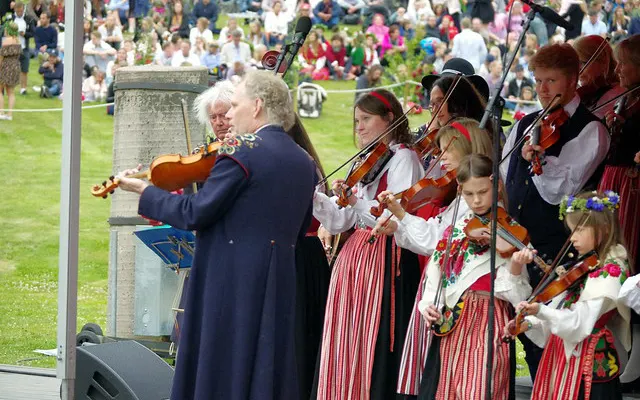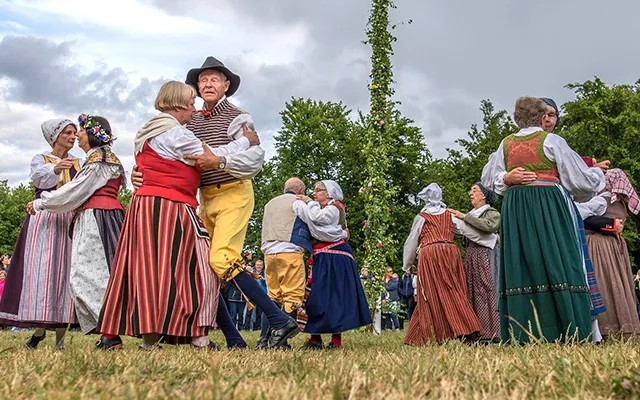Traditions of the of Swedish Midsommar
Learn about the Midsummer rituals and get a deeper understanding of the festival which is an identical part of Swedish culture.
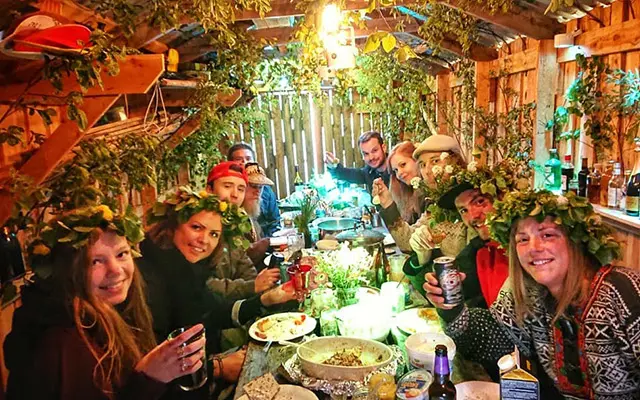
Midsommar includes some quite vivid and distinctive customs and traditions. Most of them are related to ancient practices and habits while others have evolved through the centuries and are integrated with cultural and societal elements. All of them reveal the spiritual background and the festive orientation of the celebration.
Maypole
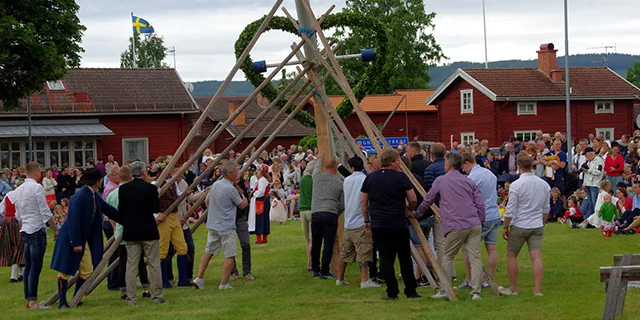
The Midsommar pole is a relatively new tradition in Sweden. It was adopted from old German spring celebrations observed on the 1st of May. Given that spring comes a bit later in Sweden it was quite challenging to find enough greenery and flowers in order to decorate the pole earlier in the spring. For this reason, the custom moved to the summer solstice period and was integrated into the Midsommar celebration. As a part of the days’ ritual, the Midsommar pole is decorated and raised in the middle of a park. Everyone strives to set it successfully with the first attempt since a potential fall can be a signal for bad luck. The phallic form of the pole combined with the two large hoops attached on the top symbolizes fertility.
Folk dances
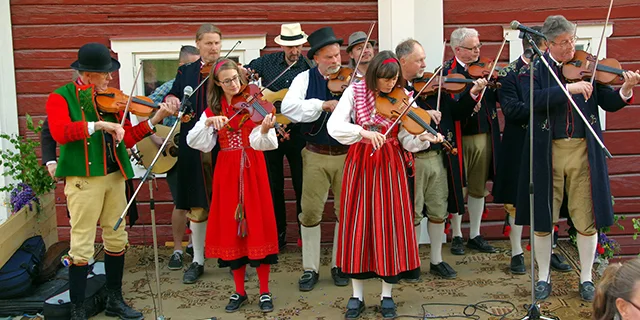
After the Midsommar pole is raised successfully, it remains the center of the festivity for the whole day and brings together the whole community. Everyone is invited to take part actively to the dance performances that are taking place around the pole. People with traditional dresses as well as visitors and tourists join the feast and regardless their age, they become a part of the celebration at once. The songs and the dances have evolved through the years and today, apart from the traditional ones, there are some which are especially appreciated by children (and not only!). This is the frog dance (små grodorna-little frogs) that includes funny lyrics and movements illustrating the physical body details that are missing from frogs like ears “öron” and tails “svansar”.
Food, drinking songs
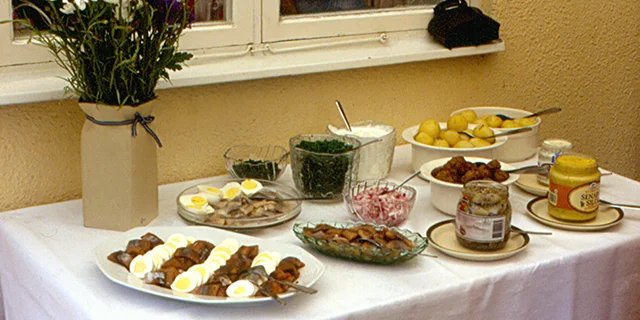
Later in the afternoon, the celebration moves around a table. The extended family accompanied with friends enjoy a festive meal with a series of typical Swedish dishes. The classic Midsommar lunch includes seasonal boiled potatoes (which are ready mainly in southern Sweden), dill marinated salmon, pickled herring, crispbread, open sandwiches with shrimps or prawns as well as different kinds of salads. The most famous dessert is strawberries with cream. The participants drink a large amount of bitter-tasting schnapps throughout the meal, while some drinking songs lead the alcohol consumption adding up to the festivity atmosphere. One of the most frequent chants is the “Helan går” (the whole thing goes) that encourages everyone to go for bottoms up!
Decorations
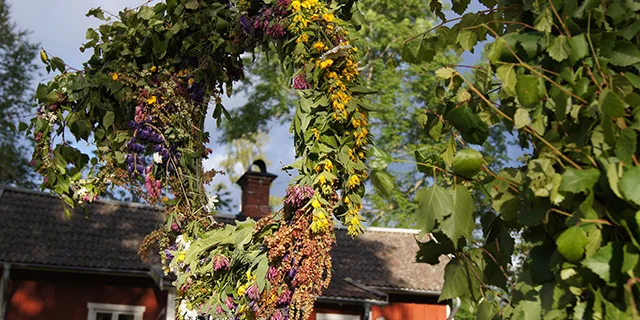
Colorful and beautiful decorations dominate the Midsommar celebration. To decorate is a long tradition that derives from the spirit of the festivity. As the original word for the maypole (majstång) indicates, the flowers and the greenery are the main decoration elements. The synthetic term “maj” refers to May and corresponds to the custom “att maja” (to may) which means to decorate with greenery in order to bring the feeling of May. Thus, historically, people were used to decorating their houses and fences with flowers, birches, and twigs in order to have good fortune and health. This tradition survives until today as someone can find houses and tables decorated with flowers, wreaths and Swedish flags.
Enjoying the outdoors
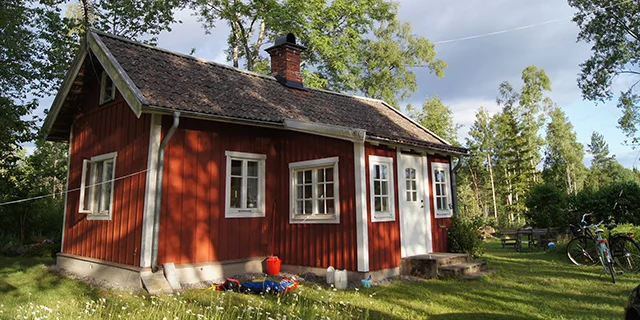
Midsummer is an ideal opportunity to enjoy the outdoors. When the Swedish summer weather allows it, people are traveling to the countryside where the Midsommar celebrations are taking place or they visit their summer houses (sommarstugor). It is very common for families and friends to meet up at those summer cottages and enjoy the feast being closer to nature. The meal is mostly taking place in the garden while playing outdoor games is almost a must. The game called “kubb” is a typical one that involves almost everyone, regardless of his or her age.
Flower wreath, superstitions
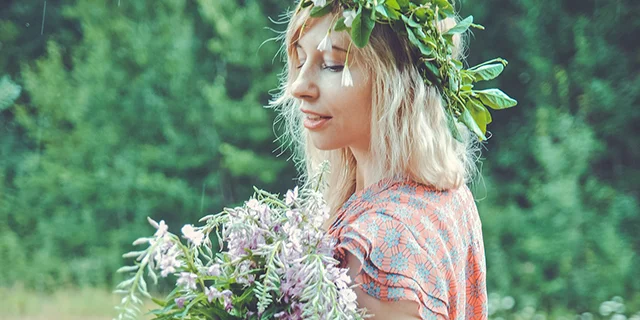
The flower wreath (Midsommarkrans) is a characteristic symbol of the Swedish Midsommar. Except for decorating purposes it is used as a head crown by many children and women. It is like a morning ritual to head out to the fields in order to collect flowers and birch branches which help to bind a wreath. Parallel to that some younger women follow the popular folklore tradition indicating that those who will sleep with a bouquet of nine different flowers under the pillow will dream their future husband. According to the legend, the process of flower-collecting should be done in total silence and it is good to know that the magical powers of the bouquet are increased if a flower is collected from a churchyard.
